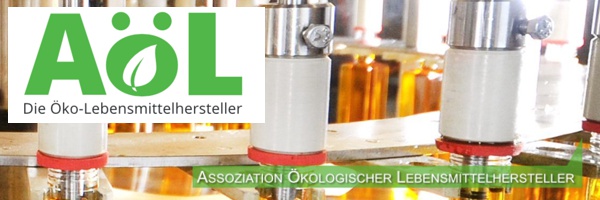Warum gibt es das Biokunststofftool?
Das Online-Tool wurde von der Assoziation ökologischer Lebensmittelhersteller e.V. ( AöL) im Rahmen des vom Bundesministerium für Ernährung und Landwirtschaft (BMEL) geförderten Projekts „Handlungsoptionen zum Einsatz von nachhaltig biobasierten Kunststoffen als Verpackungsmittel für Lebensmittel. Hilfestellung zur Entscheidungsfindung anhand eines Internetportals“ entwickelt. Es wurde in einem weiteren durch das (BMEL) geförderten Projekt „Aktualisierung und notwendige Weiterentwicklung des Biokunststoff-Tools zu am Markt bedeutenden Verpackungsstoffen um die Verbreitung und Akzeptanz des Einsatzes von nachhaltigen biobasierten Kunststoffen als Verpackungsmittel für Lebensmittel zu erhöhen“ – (BioVP2), grundlegend überarbeitet. Verpackungs- und Lebensmittelhersteller sowie Experten aus der Wissenschaft waren daran beteiligt.
Dieses Online-Tool bietet Informationen zu den sechs wichtigsten Werkstoffgruppen von biobasierten Kunststoffen, die derzeit auf dem Markt sind.
Die vier Kriterien Ökologie, Soziales, Sicherheit & Technik und Qualität werden über Unterkriterien wie z. B. Landnutzung, Ökobilanzen, soziales Standards, Migration bewertet. Die Bewertung erfolgt auf zwei Ebenen hinsichtlich der Quantität (Anzahl) und der Qualität (Aussagekraft) der vorliegenden Informationsquellen.
Sie haben mit diesem Internettool die Möglichkeit, sich zu dem gewünschten Verpackungsmaterial anhand der vier Kriterien und der entsprechenden Unterkriterien, unter Angabe der Quellen, zu informieren und alle Verpackungsmaterialien in ihrer Bewertung miteinander zu vergleichen. Damit wollen wir Sie in Ihrer Entscheidungsfindung unterstützen
Weitere Details zur Nutzung des Toos finden Sie unter “Manual”.
What are bio-based plastics and why is there demand for them?
Today, it is impossible to imagine everyday life without plastics. From medical to technical applications and also in food packaging, these materials are used in almost all areas of daily life. According to statista.de, “the annual global production of plastics has risen sharply over the past 70 years or so – to a level of around 350 million tonnes in 2017. This means that the production volume alone of plastics worldwide has increased approximately sevenfold compared to 1976.”
The vast majority of these plastics are made from fossil raw materials, which are currently being consumed by humankind faster than they regenerate through natural, geological processes. In light of this, bioplastics based on renewable raw materials represent a promising alternative. Bioplastics or bio-based plastics are plastics which are produced using renewable raw materials.
However, the term “bioplastic” is not always used uniformly. In the bioplastics tool, the project team has chosen the term “bio-based plastics”. Therefore, the selection of the described marketable bio-based materials refers to biodegradable plastics, non-degradable plastics and plastics made in part from oil, such as PET. Called drop-in plastics, some of them, such as PE, for example, can be produced both using mineral oil and using renewable raw materials. For bioplastics, manufacturers mainly use sugar, starch and cellulose as starting materials, which they extract from plants such as maize, sugar cane, sugar beets or wood. The advantages and disadvantages of selecting the materials in the tool are compared with the following sustainability criteria in the tool: ecology (including cultivation of the raw materials and processing), social compatibility, safety and technology, and quality.
Standard plastics are currently mostly produced from oil, natural gas and coal, which means that the price of crude oil has a direct impact on the price of plastics. Rising energy and raw material requirements worldwide are increasing this price, which can lead to political conflicts in producing countries. A further increase in demand will lead to oil being extracted using methods that are increasingly harmful to the environment. This is why, for example, fracking methods are being used in the USA and Russia, and in Canada and the USA it is extracted from tar sands. Both are practices which are strongly criticised, particularly by environmental organisations. In addition, they continuously increase land consumption, e.g. through pipeline leakage, fracking or extraction from tar sands. These areas are lost to food production in the long term. Drilling for oil, e.g. in the Arctic and the deep sea, is also a highly problematic practice environmentally. Today’s bioplastics hardly compete with standard plastics in terms of price. However, their market share is increasing due to growing environmental awareness among the public.




